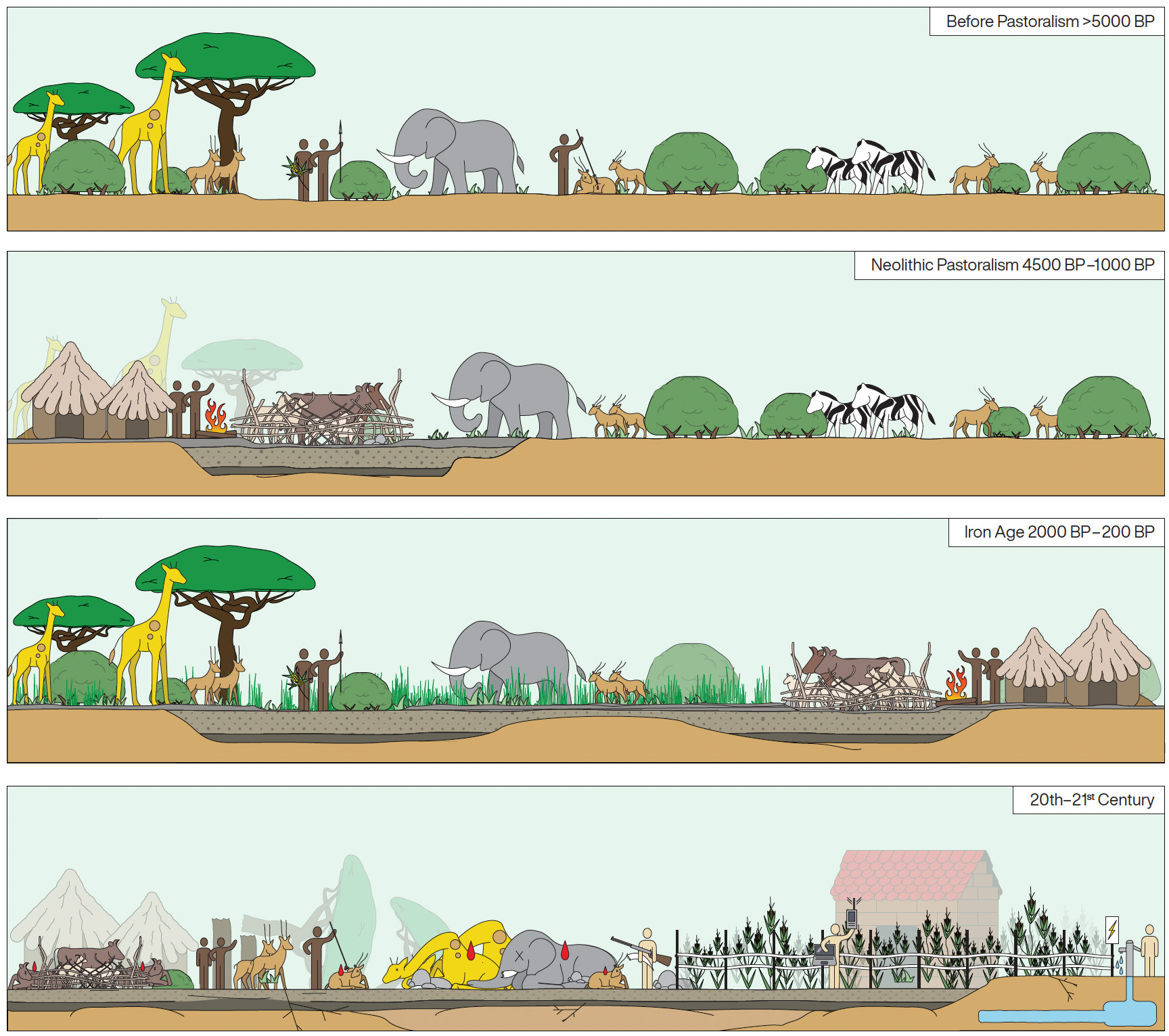The legacies of pastoralist herders in Africa leave enduring marks on soil fertility, shaping the very landscape they inhabit. By confining their herds overnight, mobile pastoralists inadvertently create hotspots of soil fertility, concentrating nutrients through the accumulation of excrement. These nutrient-rich microhabitats, spanning hectares in size, emerge as a result of widespread settlements, persisting over millennia. Moreover, the continued enrichment of these areas by both wild ungulates and domestic herds, drawn to the lush forage within pastoral corral sediments, reinforces the significance of these anthropogenic hotspots.

This intricate interplay between soil, plants, and herbivores not only sustains these hotspots but also fosters a rich biodiversity at a landscape scale, profoundly influencing the structure and function of the surrounding savannah ecosystem. Pastoralist settlements have continuously enriched and diversified African savannah landscapes over millennia, as evident in satellite images such as those depicting the Ntuka area in southwestern Kenya, where glades ranging from 4,400 to 15,000 square meters in size serve as tangible reminders of this enduring legacy.


